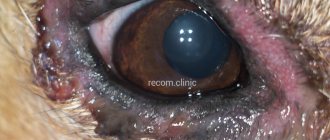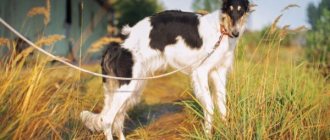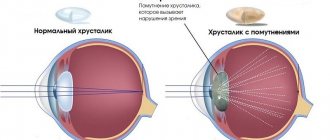Respiratory ailments are not that rare among pets. One of them includes asthma, which translated from Greek means heavy breathing or shortness of breath. Asthma in dogs is a chronic pathology that occurs due to the fact that the animal’s immunity gives too intense a response to an antigen that provokes and stimulates inflammatory processes in the lower respiratory tract.
The mechanics of the disease is based on bronchospasm - a phenomenon in the pet’s body when the lumen between the bronchi suddenly narrows, preventing full gas exchange between the dog’s lungs and the external environment. As a result, the portions of inhaled oxygen are reduced, which leads to the pet experiencing suffocation. In veterinary medicine, pulmonary and cardiac asthma are differentiated. The article will outline what causes this disease, what symptoms you need to pay attention to and how to treat your furry friend.
What is asthma in dogs
The diagnosis of bronchial asthma is the same for both dogs and humans. We are talking about a serious chronic disease that affects the respiratory system and causes so-called bronchial obstruction - difficult wheezing, up to the complete inability to breathe. Physiologically, this condition is explained by a narrowing of the lumen in the bronchi due to involuntary contraction of smooth muscles (bronchospasm), which, in turn, leads to insufficient ventilation of the lungs, problems with the passage of mucus from the bronchi and, ultimately, to the impossibility of free movement of air through the respiratory tract .
Did you know? The first mention of asthma as a disease characterized by asthma attacks can be found in the famous poems of Homer. It is believed that it was this literary source that introduced the ancient Greek word “ἆσθμα”, which is still used in medicine all over the world.
The disease occurs in the form of inflammation, but does not have clearly defined stages of development. Bronchospasm often occurs suddenly, as a reaction to contact with a certain irritant, after which it goes away after some time - after taking a symptomatic drug or spontaneously.
However, if bronchospasm lasts for a long time, and the patient does not receive adequate help, the situation can become life-threatening, which in medicine is called status asthmaticus. Thick mucus accumulates in the bronchi, the windpipe not only spasms, but swells greatly; due to the developing suffocation, the oxygen content in the internal organs, tissues and cells decreases sharply, and a real threat to life arises. Thus, according to statistics, in humans, status asthmaticus leads to death in approximately 5% of cases, even when the patient is provided with intensive care. There are no such statistics among animals, but one can assume that the results would be much more disastrous.
Asthma cannot be contracted. This disease is not transmitted to animals or people, so contact with a sick dog is absolutely safe.
Forecast
The prognosis for dogs with asthma is favorable, subject to timely diagnosis and treatment. In addition, attacks will be completely excluded if it is possible to identify the allergen and prevent its contact with the animal. In any case, controlled attacks of allergic bronchitis will preserve the animal’s quality of life and will not affect its duration in any way.
Leave comments at the bottom of this article, join in
Bronchial asthma is a disease that can affect the respiratory system not only of humans, but also of animals. In dogs, asthma occurs quite often and is considered a serious illness that threatens the health and even life of the pet. Asthma in dogs is associated with inflammation in the bronchi, which causes the airways to constrict and then cause the dog to choke. Dogs of all breeds, regardless of size and age, suffer from asthma. However, the disease often occurs in young animals, greatly frightening owners with its manifestations. Today we will talk about the symptoms of asthma in dogs, how to diagnose and treat the disease.
Asthma is a pathological condition of the respiratory organs, which can be either congenital, genetic, or acquired. Accordingly, there are several factors that can cause symptoms of the disease in a dog.
Table. Why does asthma occur in dogs?
| Cause | Description |
| Hereditary disposition | It is believed that a genetic factor is fundamental in the pathogenesis of asthma in dogs. From a parent couple where one dog (and even more so both) suffers from bronchial asthma, there is a high probability that puppies will be born with a tendency to the disease |
| Chronic bronchitis | If an animal’s bronchitis has reached a chronic form, then mucus is constantly present in the bronchi and lungs. The respiratory system is affected by swelling and irritation, which is the cause of asthma |
| Allergic reactions | Allergens that irritate the bronchi are another risk factor. Dust, low-quality food, cigarette smoke, pollen from flowering plants, chemicals, cosmetics can cause an allergic reaction in a dog. |
| Infectious and viral diseases | Diseases of the respiratory system greatly undermine local immunity. Asthma in a dog can develop against the background of a fungal, viral or infectious disease, tracheitis, laryngitis and pneumonia |
| Permanent state of stress | In the body of a dog living in a state of constant discomfort, fear, experiencing stressful situations and having mental disorders, destructive hormones are constantly produced. It is this substance that subsequently provokes bronchial asthma in the animal. |
| Disproportionate physical activity | If an animal receives heavy intense physical activity that does not correspond to its age (a puppy or, on the contrary, an elderly dog), as well as its natural characteristics, it experiences a lot of disturbances in the functioning of its internal organs. Asthma often develops against this background. |
| Breed tendency | Breeders and veterinarians are confident that belonging to a certain breed group is a provoking factor. So, poodles, pugs and Maltese dogs are prone to asthma. |
Why does asthma occur in dogs?
Unlike bronchitis, pneumonia and other respiratory diseases with a similar clinical picture, bronchial asthma is not infectious in nature.
Like any other non-infectious disease, bronchial asthma has a complex etiology. Moreover, its true causes are still not fully understood. Most likely, we are talking about an autoimmune pathology, i.e. a disease that occurs due to a failure of the body’s defense system, in which it begins to perceive any harmless substances, and sometimes even its own healthy cells, as enemy agents. If the animal’s immunity is strong enough, such attacks directed against itself do not go unnoticed and can greatly worsen its overall well-being.
In turn, various conditions can contribute to the development of this kind of disease, and these are usually what is meant when talking about the causes of bronchial asthma. Some of these factors are congenital in nature, others arise throughout the life of the animal, i.e. can be considered as external, acquired.
Did you know? Scientists have proven an interesting pattern: if one of the parents suffers from asthma, the child will develop it with a probability of 20 to 30%, and if both the father and mother are asthmatics in the family, then the chances of inheriting the disease increases to 70%.
Hereditary predisposition
Genetic predisposition is clearly one of the main explanations for the development of asthma. And even the fact that the disease can manifest itself in a dog at absolutely any age does not negate the influence of heredity on this process.
There is no sufficient reason to talk about a direct relationship between the breed and the special susceptibility of its representative to bronchial asthma, since such a pathology, unfortunately, is universal. And yet it has been noticed that the disease is diagnosed more often than in others in the following breeds of dogs:
- poodle;
- pug;
- Maltese;
- boxer;
- bulldog (English and French);
- Labrador and Golden Retriever;
- Cocker Spaniel;
- Dalmatian;
- Shar Pei;
- many terriers.
And yet, speaking about the hereditary nature of bronchial asthma in dogs, first of all we are not talking about the breed, but rather about the ability to transmit the disease or a predisposition to it by inheritance. Therefore, when buying a puppy, it makes sense to ask whether its ancestors suffered from autoimmune pathologies.
Allergy
According to the nature of the course, bronchial asthma is very similar to allergies, so the pathology is very often considered as a specific type of allergic disease. More in-depth research suggests that allergic bronchial asthma is the most common type of disease, while there are other forms that are rarer (cholinegic, dishormonal, etc.).
One way or another, bronchospasm, as the main symptom of asthma, usually develops in response to an irritating factor, i.e., in other words, to an allergen. There are a huge number of such provocateurs, and each animal has its own set of “enemies.”
Did you know? One of the most respected medical societies - the American Academy of Allergy, Asthma and Immunology (AAAI) - was created in 1943 and initially did not have the last two words and the union in its name. Mention of asthma was added only in 1991, and thus scientists finally separated the two diseases - asthma and allergies.
Allergens that conditionally cause an asthmatic attack can be divided into several groups:
- household (for example, dust, tobacco smoke, etc.);
- contact, or epidermal (chemical substances, the smell of which the animal inhales after contact with the skin - for example, shampoo or soap);
- medicinal;
- food;
- pollen;
- insect (allergy to insect bites - fleas, ticks, mosquitoes, etc.);
- thermal (cold and heat can also cause an allergic reaction).
No matter how complex a disease allergies are, bronchial asthma is even more complex. The main feature of this autoimmune pathology is that, in addition to the allergic mechanism, other factors also play a role in its development.
Chronical bronchitis
There is a persistent misconception that bronchial asthma is a complication (consequence) of chronic bronchitis. In reality this is absolutely not true. These diseases have a very similar clinical picture, and therefore one is often mistaken for the other. Moreover, as a rule, a veterinarian diagnoses a coughing dog with “bronchitis” and prescribes appropriate treatment. Later, when it becomes clear that the pet’s condition has not completely improved, although the “exacerbation phase” seems to have passed, additional examination leads to the diagnosis of bronchial asthma, but no one cancels the original diagnosis. As a result, it appears that asthma developed as a result of improper treatment of bronchitis, while in fact there was a medical error.
Important! Asthma and bronchitis are different diseases. There is no direct connection between them, and one cannot flow into the other.
In order to prevent the dog from being treated with drugs that cannot help with an autoimmune disease, it makes sense for the owner to learn a few main differences between asthma and bronchitis and, if necessary, correct a less-experienced veterinarian. For clarity, they are presented in table form:
| Distinctive feature | Chronical bronchitis | Bronchial asthma |
| Character of the current | Sluggish course, alternating remissions and exacerbations with a lingering cough that does not go away for a long time | Sudden onset of an attack with full recovery of well-being after its end |
| Previous events (immediate provocateur) | Hypothermia or acute viral infection (bacterial complication) | Respiratory contact with allergen |
| Cough | Constant, with alternation of unproductive and productive. After heavy coughing it goes away (the lumen in the bronchi is restored after mucus is removed). | Paroxysmal, always unproductive (dry), does not bring relief (the lumen in the bronchi remains narrowed) |
| The moment after which the cough worsens | Exercise stress | Period of complete rest |
| Dyspnea | Occurs only in severe cases | Always present |
| Sputum | Purulent with mucus, thick and copious | Transparent and lean |
| Body temperature | Possible periodic increases | Always normal |
Respiratory infections
Despite the completely different nature of respiratory infections and bronchial asthma, it has been noted that there is still a certain relationship between them. Thus, it has been noticed that if a dog often suffers from colds and infectious diseases of the upper respiratory tract, the likelihood of developing asthma greatly increases. By the way, this rule also works for people. For example, most patients who were diagnosed with bronchial asthma in adulthood either suffered severe respiratory inflammation in childhood or suffered from it in a normal form, but constantly.
Perhaps this pattern is caused by a heavy load on the immune system, which ultimately causes it to fail and turn its “weapon” against an imaginary “enemy.” There is another assumption, according to which it is the lingering cough that accompanies colds that is somehow “remembered” by the body as a normal state and begins to occur regardless of the presence of an infectious pathogen, but in response to any harmless irritant.
Infection-dependent bronchial asthma is a special type of disease in which the direct cause of bronchial obstruction with an allergic mechanism of development is a viral, bacterial or fungal infection, and it is absolutely not necessary that it be respiratory. In particular, scientists have discovered an amazing connection between bronchial asthma and pathogenic fungi of the genus Candida (the disease they cause is well known to everyone under the name “thrush”, but officially it is called candidiasis). Moreover, there is a surprising assumption that Candida is not a provoking factor, but rather the true cause of the development of asthma. Proponents of this theory believe that a pathogenic fungus, when it enters the body, has a special effect on the immune system, switching it from normal functioning (including the fight against the fungus) to autoimmune - allergic.
Stress
Strong emotional disturbance in itself, of course, is not able to cause bronchial asthma in an absolutely healthy dog. But stress can become a kind of trigger - an event that provokes the first external manifestation of this pathology, which was already inherent in the body, but did not develop until time.
There is a rather rare type of bronchial asthma called neuropsychiatric. Its main feature is the occurrence of attacks of suffocation in response to emotional experiences and factors in the psyche. It is believed that the cause of this pathology is systemic diseases of the central or autonomic nervous system.
Did you know? Translated from English, “trigger” is a trigger. What is meant by this term in modern psychology is very well shown in the Russian series of the same name from 2021 (alternative name - “Provocateur”).
Poor living conditions
As is the case with stress, poor dog care cannot be considered a direct cause of the development of bronchial asthma. However, an inattentive owner who ignores the first symptoms of respiratory failure in his pet can, through inaction, significantly aggravate the animal’s condition. In addition, the fact that in its life a dog often encounters factors that contribute to the formation of an asthmatic component can be attributed to maintenance errors. We are talking about allergens, frequent infections, and an unfavorable emotional background.
Other reasons
Other reasons that may contribute to the development of asthma in a dog include:
- bad ecology;
- sedentary lifestyle and obesity;
- unfavorable meteorological or climatic conditions (for example, illness or, conversely, recovery from it, sometimes is a direct consequence of moving to another area);
- low-quality food (primarily dangerous are preservatives, dyes, flavors and other chemical additives contained in food products);
- physical activity (there is the so-called “physical exertion asthma” - a condition in which respiratory failure occurs as a result of increased physical activity);
- intolerance to certain medications, for example, aspirin or paracetamol (intolerance and allergic reaction are not identical concepts, so this factor is considered as an independent one);
- some internal diseases, in particular, disorders of the reproductive or endocrine system (dishormonal variant of pathology).
Causes of the disease
Many scientists and specialists in the field of pulmonology are struggling with the question of what can trigger the development of asthma, both in humans and in animals. Presumably, the etiology of bronchial asthma in dogs is associated with specific reactions of the immune system.
Allergy occurs as the body's response to a perceived irritant. The cause of the development of asthma is also considered to be the animal's genetic predisposition. Dogs of brachycephalic breeds suffer from diseases of the pulmonary system many times more often than their relatives with a normally developed muzzle.
The mechanism of occurrence of an asthmatic attack is due to a sharp narrowing of the lumen in the bronchial tree. Bronchospasm is characterized by the outflow of specific bronchial secretions from the lung tissues and the release of fluid back.
Spasm of the bronchial tree leads to breathing problems. The animal begins to choke and cough heavily, without being able to take in a full chest of air.
In the vast majority of cases, asthma in dogs develops in response to an external irritant. Allergy is the basis of bronchospasm. Protein components from the environment are recognized by the immune system as foreign, provoking the development of a corresponding rejection reaction.
The autoimmune reaction is caused by increased production of specific killer cells. As a result of a malfunction, they attack not only foreign proteins, but also the cellular structures of their own body.
Before prescribing adequate treatment, a professional must identify the underlying factor that triggered the onset of bronchospasm. Without proper diagnosis, treatment will not be effective.
Asthma occurs in dogs regardless of age or gender. The main factors that can lead to the development of an asthmatic attack are:
- environmental problems where the pet and its owner are forced to live;
- allergies to the seasonal flowering of certain plants;
- a large accumulation of dust in the living area where the pet is often present;
- dirty and polluted air that the dog is forced to inhale;
- the presence of volatile chemical elements in the air (smell of burning and cigarette smoke);
- problems with the emotional state of the animal (mental disorders);
- diseases of the respiratory system associated with exposure to pathogenic bacteria or viruses.
How do symptoms appear?
Bronchial asthma is a disease with a fairly clear clinical picture, so its symptoms are difficult to confuse with something else.
The main symptom of bronchial asthma is severe respiratory failure, and more difficulty occurs when exhaling than when inhaling. However, since the dog cannot talk about its feelings, the following characteristic markers may indicate that the animal suffers from bronchial asthma:
- shortness of breath, which always occurs under similar circumstances (immediate reaction to the stimulus - after about a few minutes);
- strong whistling and wheezing, sometimes gurgling sounds accompanying the breathing process;
- tense posture during an attack, widely spaced paws (feeling suffocation, the dog tries to help itself by involving various muscle groups in breathing movements);
- change in breathing rhythm - short convulsive breaths with contraction of the abdominal muscles and slow but heavy exhalation;
- accompanying allergy symptoms - lacrimation, clear exudate from the nose, sneezing;
- a dry cough that does not bring relief, sometimes, before the end of the attack, with a small amount of sputum (the animal, coming to its senses, begins to swallow convulsively and lick nervously);
- involuntary urination due to strong tension;
- cyanosis of the mucous membranes (indicates the development of status asthmaticus - oxygen deficiency).
Seizure prevention
To prevent an attack of suffocation, at the first signs of deterioration in the animal’s condition, you must do the following:
- open all the windows in the room, turn on the air conditioner or fan - all this will help increase air circulation in the room, under such conditions it will be easier for the animal to breathe;
- take your pet for a walk outside so he can get some fresh air;
- take your dog for a ride in a car with the window down - the dog’s well-being will improve due to the constant flow of cool, fresh air, and the change in conditions will contribute to the release of adrenaline into the blood, which will activate all body systems and help suppress an attack.
Asthma in dogs is a dangerous condition that is caused by disorders of the respiratory system. This disease must be treated. It is important to be able to provide first aid to an animal in case of asthma attacks - otherwise the pet may die.
Bronchial asthma in dogs is a dangerous disease. It manifests itself as an attack of suffocation due to muscle spasm in the respiratory tract. This is usually a consequence of chronic bronchitis. It can develop at any period of life, but is more often observed in puppies or animals aged 2 to 7 years. Poodles, Maltese and pugs are most prone to pathology. The development of the disease can be caused by the following factors:
The spontaneity of initial attacks is considered the main diagnostic problem. It often happens that a specialist sees a pet that is suffocating at home in the clinic and is completely healthy and active. It is impossible to visually determine the cause of the attack. Therefore, asthma in dogs is diagnosed based on the results of clinical tests and special tests.
When asthma develops in dogs, the following symptoms are observed:
- Whistling when breathing is the most striking sign. An attack develops over several hours or even days. The animal's motor activity decreases.
- Allergic cough. Most often observed dry; asthmatically, this is expressed in the form of an attack of suffocation, the eyes are watery and itchy, and the nose is running. The dog begins to sneeze.
- The inhalation is short, accompanied by cramps in the abdominal area. The exhalation is always calm and slow. The owner can hear wheezing even at a considerable distance from the animal.
- Involuntary urination during spasms.
- At the very beginning of the attack, the animal may choke and lose coordination. It spreads its front legs wide, stretching the skin in the chest area. The space between the ribs can be clearly felt.
- The dog keeps its mouth open, hunches over and stretches its neck. Increased thirst, refusal to eat, general weakness and exercise intolerance are noted.
- Cyanosis is a blue discoloration of the mucous membranes in dogs. It is considered a dangerous sign of bronchial asthma.
If a cold is present, then the signs of pathology weaken and only a veterinarian can detect them.
How is the diagnosis carried out?
Like any other autoimmune pathology, bronchial asthma, especially when it comes to veterinary medicine, is diagnosed primarily by excluding other diseases that have similar clinical manifestations. These, in particular, are bacterial or viral diseases of the respiratory tract.
In order to establish or absence of inflammatory processes of this group, the following types of examinations may be prescribed to the animal:
- general and biochemical blood and urine tests;
- blood test for antibodies;
- fecal analysis for the presence of helminths;
- cytological examination of swabs from the upper respiratory tract;
- chest x-ray;
- auscultation (listening) of the lungs;
- tracheobronchoscopy (optical examination of the mucous membranes of the bronchi and trachea);
- spirography (respiratory function test);
- ultrasound examination of the heart;
- echocardiography, etc.
After the “bronchial asthma” analysis is confirmed, the stage of determining the main irritant that causes the attack begins. Since sometimes the problem lies in the presence of other internal diseases in the animal (nervous, endocrine, respiratory system, etc.), deeper research can help stop attacks. But more often, a successful search for an allergen depends on the attentiveness of the animal owner himself, since allergy tests that are common in “human medicine” are used in veterinary medicine quite rarely and only in exceptional cases.
Important! Owners of animals suffering from bronchial asthma must purchase a special oxygen mask. It is necessary for the rapid relief of attacks.
Cardiac asthma
The etiology of this disease lies in the pathology of the left ventricle of the heart. As a result, the pet experiences insufficiency in blood pumping and the contractile intensity of the myocardium gradually decreases. Symptoms resemble the bronchial form, but there are important differences:
- The mucous membrane of the pet does not turn blue, but acquires a whitish color with a gray tint.
- Absence of any rhythm with difficulty breathing.
Most often, attacks begin at night. They are singular and there is no definite interval between them. The owner is absolutely sure that the dog has not been in contact with allergens. All these are signs of cardiac asthma.
Treatment includes diuretic therapy and complete exclusion of foods containing salt from the diet. Having an oxygen mask at home will be a good help in relieving attacks.
How to help your dog during a seizure
A severe asthma attack can cost an animal its life, so it is very important to be able to provide first aid to your pet at home. True, for this the disease must be identified and diagnosed.
When the respiratory lumen is narrowed, only rapid delivery of oxygen to the lungs - so-called oxygen therapy - can alleviate the animal’s condition. In specialized veterinary clinics, this procedure is carried out using an oxygen chamber, but the simplest analogue of such a device is a must-have at home.
If it is not possible to restore respiratory function by physically supplying oxygen to the lungs, the main thing is not to panic and provide the dog with absolute peace. There is a high probability that in the absence of inadequate, fussy and useless actions of the owner, the attack will eventually end, while the panic of the beloved owner can frighten the animal and aggravate its condition.
Dog care
If your pet is asthmatic, he will need special care.
Protect him from stress, it can provoke an attack.
We will have to reconsider the conditions for keeping the dog. If your dog lives in an enclosure, then it is necessary to arrange it in such a way that it is spacious, there are no drafts, and the dog has his warm place.
It is very important to keep the enclosure clean and take your pet for a walk every day to provide the physical exercise necessary for its health.
In the house you also need to pay attention to the place where the pet sleeps. There should be no drafts. You may need to change your dog's diet. The diet must be prescribed by a veterinarian.
Treatment of asthma in dogs
At the present stage of scientific development, bronchial asthma, like allergies, is one of the diseases that medicine cannot completely cure. However, the clinical manifestation of the pathology itself - bronchial obstruction - can be effectively treated, and in some cases can even disappear on its own, as suddenly as it appeared.
The best way to treat bronchial asthma is to eliminate the factors that provoke the development of attacks, while drug treatment is always aimed at either stopping developing bronchospasm or strengthening the general condition of the animal. For this purpose, the veterinarian can prescribe the following groups of drugs to the dog:
| Drug category | Examples | Operating principle |
| Bronchodilators | Theophylline, Solutan, Theophedrine, Ephedrine | Expand the lumen in the bronchi, make breathing easier |
| Antispasmodics (in the form of injections or inhalations) | No-shpa, Papaverine, Eufillin | Reduces the tone of smooth muscles of the upper respiratory tract |
| Corticosteroids | Dexafort, Dexa-kel, Castril, Baycox | Slow down the production of histamine, have an anti-inflammatory effect |
| Antihistamines | Suprastin, Diphenhydramine, Tavegil, Zaditen, Intal | Relieves swelling of the mucous membrane, used as anti-allergenic agents |
| Vitamins A, C, B1, E (injections) | Retinol acetate, thiamine chloride, ascorbic acid solution 5% | Promotes tissue regeneration and has an antioxidant effect |
| Immunomodulators | Anfluron, Metozal, Immunovet, Gamavit, Immunofan, Maksidin | Strengthen immunity |
general information
Allergic bronchitis, or bronchial asthma in dogs, is a condition characterized by repeated bouts of wheezing, coughing, wheezing and general difficulty breathing. The disease is always based on substances entering the animal’s respiratory system or through other routes from the environment, which leads to spasm of the upper respiratory tract and their subsequent narrowing.
As for the causes of asthma in dogs, this includes the action of the same allergens that can cause an allergic reaction in humans - pollen, cigarette smoke, poplar fluff, house dust mites, and so on. The only way to prevent your dog from developing another attack is to protect him from contact with allergens. Of course, this is extremely difficult and sometimes impossible to do.
Asthmatic disease in the vast majority of cases is of a chronic type, and the allergen that can cause hypersensitivity in a particular patient is extremely difficult to identify. With each attack, if it is not stopped, the animal’s condition worsens, and the attacks themselves become more severe. In particularly advanced cases, frequent spasms eventually cause irreversible damage to the sensitive mucous membrane lining the airways, which further aggravates the course of the disease.
Among other things, each asthmatic attack can be of different severity. With a fairly serious spasm of the bronchi, the body tissues begin to experience severe oxygen deficiency, which primarily affects the functionality of the nervous and cardiovascular systems.
In general, bronchial asthma in dogs is quite rare - much less common than in humans or cats, due to the more stable immunity and compensatory systems of the animal. However, if the first signs appear - the dog is choking, “grunting” with its nose, sneezing vigorously, the mucous membranes begin to turn blue and pale, and drooling and foam flow from the nose - you should quickly seek professional help, especially if these signs occur in the dog for the first time in my life.
Asthma in dogs should be distinguished from.
Recovery prognosis
The concept of “recovery” in relation to bronchial asthma means achieving a state of stable clinical remission, i.e. absence of attacks of respiratory failure. With adequate treatment, and, most importantly, identification of the direct provocateurs of asthma attacks, this effect can be achieved, and the dog will forget about its illness forever, which, in fact, is equivalent to a cure. However, the owner needs to understand that one cannot relax: an autoimmune disease does not disappear without a trace, and if “favorable” circumstances arise, it can return.
Relative success can be considered the acquisition of skills to successfully control the disease, i.e. the ability to respond in a timely manner to the onset of an attack and quickly stop it with the right drug.
If the disease does not affect the dog's quality of life, this can be considered a victory.
Symptoms and treatment
Symptoms
- The most obvious symptom of an incipient asthma attack in dogs is a whistling sound when breathing. And it is not at all necessary that the attack will begin immediately. Sometimes it takes up to several hours, less often, but it still happens as long as days. However, only after hearing this characteristic whistle or squeak, it is necessary to act as prescribed by the veterinarian.
- Then the owner notices allergy symptoms: the nose and eyes are running, and the eyes are also itching wildly, coughing and sneezing. It is worth noting that most coughs are dry.
- If you look closely at how the animal breathes, you will notice that the inhalation is short and accompanied by abdominal cramps, and the exhalation is calm and slow. But extraneous sounds during breathing can be heard even without a phonendoscope at a great distance.
- A dangerous symptom of bronchial asthma in dogs is cyanosis (blue discoloration) of the mucous membranes.
The dog is sitting, maybe trying to catch its breath. If one of the symptoms is spasms, the animal may involuntarily wet itself. For a dog, the most dangerous period is the initial period. The animal literally suffocates and may lose coordination. At this time, the pet can spread its paws wide, and the ribs can be in a straightened state. In this case, it will be noticeable how the skin on the chest tightens. If desired, you can feel the space between the ribs. The dog can also stretch its neck, hunch over, and open its mouth.
Treatment
How to treat asthma in dogs? Treatment for bronchial asthma should always begin with identifying the cause of the attack.
First, go to the veterinarian and describe in great detail the symptoms of your pet's illness. This is necessary so that the doctor can prescribe treatment based on symptoms, experience and even intuition. After all, there is simply no specialized treatment for asthma for dogs. For example, if a dog’s bronchial asthma manifests itself against the background of a burn of the mucous membranes, partial pulmonary edema, pneumonia, etc., the veterinarian will prescribe a drug that relieves the symptomatic manifestations of asthma and treats the underlying ailment. Most often, treating the underlying cause leads to relief of asthma and no additional therapy is required.
If the cause of a dog's asthma is an allergic reaction, the triggering factor is first looked for. Until the allergen is eliminated, your dog's asthma will not go away.
To detect a potential allergen, the owner is advised to keep an “allergy diary” of the pet, where it is necessary to record the date and cause of the attack, its duration and possible allergens inhaled at that time.
The veterinarian will prescribe additional medications that will help the bronchi open again, which normalizes the breathing process. For this purpose, adrenergic agonists and bronchodilators are prescribed. Antihistamines also help (these are both anti-inflammatory and anti-allergenic). Corticosteroids may be prescribed.
- Inhaled (oral) steroids will prevent the development of inflammation. Prednisolone is popular in this regard, which can be administered intravenously in case of a severe attack.
- Antihistamines - restore airway patency, reducing the reaction to certain types of allergens.
- Bronchodilators – help expand the airways. This is achieved by spraying the medicine through a special spacer with a mask or by oral administration of Theophylline in a daily dose.
- Antibiotics - used in cases of exacerbation of the condition, if a secondary respiratory infection is confirmed.
- Oxygen masks are required if the dog is experiencing a particularly severe attack of suffocation, in which it is necessary to organize additional oxygen supply using a mask.
All these drugs effectively and quickly cope with incipient attacks. However, we should not forget about their side effects and suppressive effect on natural immunity. Synthetic medications should be used carefully and only as needed.
To relieve attacks at home, owners use medications recommended by veterinarians:
- Ephedrine, Solutan (their effect is comparable to the reaction to adrenaline);
- Papaverine, No-Shpa (antispasmodics);
- Diphenhydramine, Suprastin (antihistamines);
- strengthening agents (vitamins).
Prevention
Preventing bronchial asthma in dogs helps reduce the number of attacks. To do this, the owner will have to eliminate all possible allergens or at least reduce the animal’s contact with them to a minimum. In some cases, homeopathy helps, but it is worth remembering that herbs can also cause another asthma attack.
But, despite this, you need to keep in mind that no matter how advanced the disease is, they can reduce the need for synthetic drugs to nothing, or help limit their use. Nature's bounty may just be a great addition to your regular asthma treatment regimen. The homeopathic approach is more gentle and treatment with natural remedies is gentler compared to medical intervention. In any case, treating bronchial asthma in a dog with herbs will not harm its health, so it’s worth a try.
Many people have herbs in their household supplies that can be useful for their beloved dog. And if not, then you can prepare them in the spring or summer. As a last resort, purchase it at a pharmacy.
So, we often use the “famous” licorice root, marshmallow root to treat coughs; we increase or restore immunity with the help of echinacea (in the form of a tincture), a decoction of dried grape leaves. All these natural gifts will be gratefully received by the dog’s body.
A chronic disease, even a progressive one, will not be life-threatening for a pet if the owners take care of it with genuine love and regulate the healing process.
Methods for diagnosing the condition
Diagnosis of the disease is difficult due to the variety of causes and factors that provoke it, as well as due to the need to exclude a large list of respiratory pathologies with similar symptoms. If you suspect bronchial asthma in your four-legged friend, it is necessary to conduct a full clinical examination.
An important role is played by the collection of anamnestic data, especially in the allergic nature of asthma. Auscultation allows you to identify the localization of the inflammatory focus and evaluate the functioning of the lungs and bronchi.
For differential diagnosis, the animal is prescribed an X-ray examination of the chest to identify pathological changes. The use of bronchoscopy allows you to visualize the process of inflammation of the bronchi, identify areas of hyperemia and edema of the alveolar tissue. An effective diagnostic method is swabs from the respiratory organs, which provide a picture of the presence of an infectious cause of the disease.
The phenomena of a bronchial attack can be caused by pathological processes in the heart. In this regard, the sick dog undergoes electrocardiographic and ultrasound examination of the myocardium. In order to exclude heartworms, a parasitological analysis is carried out.










